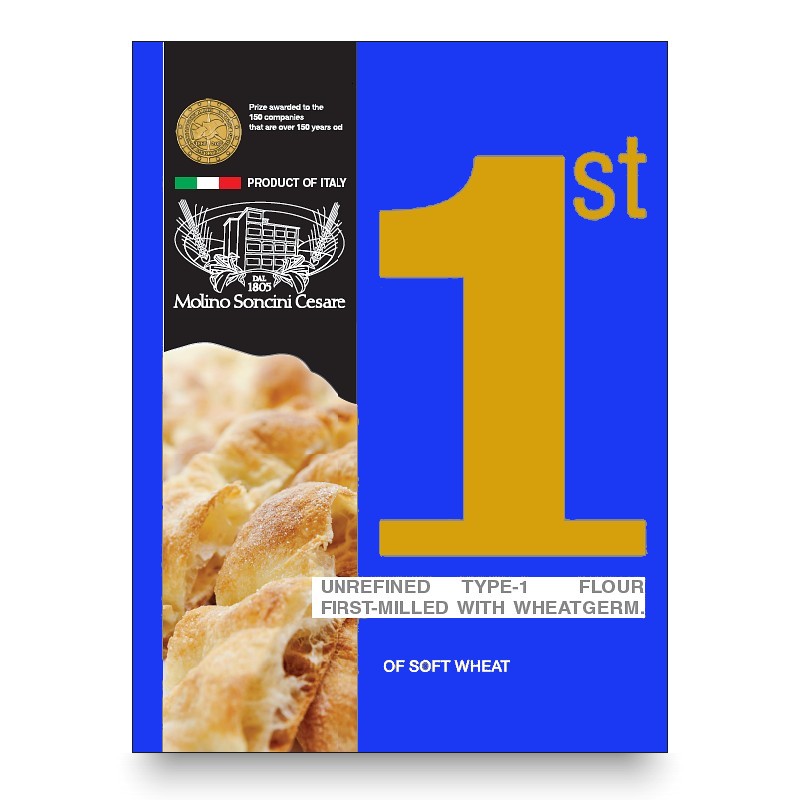type-1 First Focaccia flour (10-16 hours)

Suitable for making crispy Roman-type focaccia and pizza, and other bakery products with long proving times, rich in taste and with an unmistakable aroma.
So I am halfway through my trip and halfway through Italy, and I have arrived in the city to where, they say, that “all the roads lead” - however, as I have only taken one road to get here, I can't confirm that. But what I can be sure of is that in Rome, they speak a language completely different from every other one that I have heard so far: they have a louder voice, that leaves you without breath. You might think that you will leave the city half-dazed as a result, but in fact, you will realise that all that was happening was that you were falling in love with it. Like a complex woman, it's not always relaxing to be in her company, but her beauty is unmissable. There is no room for apathy in Rome, everything is of vital significance. The slogans scrawled on the walls, even the sheets hung out across an upper-storey clothes-line to dry above a narrow side-street. I would like to be able to list all the places I have seen during this trip, like positions in a league-table, but when you arrive, you quickly realise that there is no contest. Roma has its own rules and it is not important that you understand them. However, I can say that my favourite spot in this trip is where I am sitting now as I write this, which falls into the category of “things you must do at least once in your life-time”: simply sitting outside a trattoria in Trastevere eating focaccia stirata, with the air of someone who has suddenly understood something of great significance. With the air of someone who has all the time in the world. So, in fact, if you were to ask me to describe Rome in just one phrase, now I would say that here, in fact, you do have all the time in the world. Hugs L.

Roman-type focaccia In a deep pot, mix carefully together the two types of flour and the beer yeast. Add 70ml of the water, and mix well together. As soon it starts to form into a dough, add the lard, the remaining water, the salt and finally the extra-virgin olive oil. Work all the ingredients together for at least 15 minutes, and then leave the mixture to rest until it has doubled in volume, which should take about two hours. Now you can divide the mix into three pieces, gently rolling each one. Leave them to rest for another hour. Then place each block of dough one by one in a shallow baking tray, gently flattening each with your finger, and extending them to the full length of the tray. Moisten the surface with olive oil, and bake in a pre-heated oven at 230°C for 18-20 minutes. Remove from the oven when they are browned on top, and slightly crusty.

In Roman times, focaccia was called "liba" and was the typical food included in offerings to the gods. Even today, in some traditions, this bread has maintained its cultural heritage: flour is, after all, one of the most basic foodstuffs needed for human existence, a genuine symbol of life. Focaccia can be found in all the regional Italian culinary traditions: Genoa has its own typical Genoese or Recco focaccia, central Italy has a version called "crescia" or "Schiacciata" and in southern Italy, it is known as "pizza" with an endless variety of fillings. In Roma, focaccia (well seasoned with salt and extra-virgin olive oil) is "stretched" or "pulled": after it has risen, the dough is not fully flattened, but it is literally "stretched" and elongated and then placed in the oven. It is excellent with nearly any filling you can think of: fresh, dried or sun-dried tomatoes, cold cuts of meat, mature cheeses, bufala mozzarella and other types of fresh cheeses, olives, onions, and chutneys and compotes of all imaginable types.